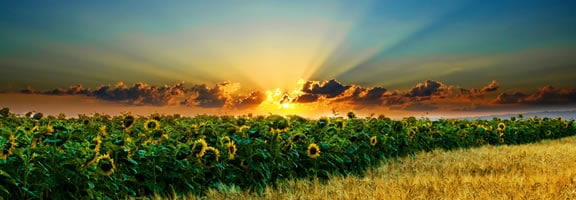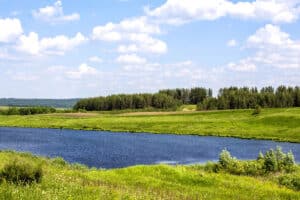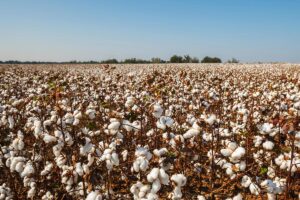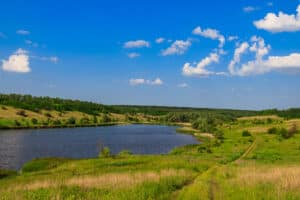A Rush to Hard Assets
Fiscal Cliffs, economic instability, over regulation, taxmageddon, hyperinflation, trillions of dollars in unsustainable debt, high unemployment rates, debt ceilings, total economic meltdown, and the list goes on. Sound familiar? It should. Often these headlines are ignored as they play on our fears and anxieties. Unfortunately, these are harsh realities that pose a very real threat to the financial well-being of many Americans.
With so much uncertainty in our current economic environment, investors are searching for and planning on making their “safe investment”; mainly as a hedge against inflation. Investors have many options on where to place capital. Capital can be invested in stocks, bonds, gold, silver, precious metals, new business ventures, energy, or other areas of investment.
With so much instability in the financial world, a rush to hard assets has prevailed. These hard assets provide stability and protection, some offer more stability than others, however, there is one asset that is still a very good bet: Land.
Why Land?
Land is tangible. Land can be used. You can walk on it. You can see it. You can touch it. You can feel it. It will never go away. Its overall net worth will never be zero (some assets can lose, and have lost ALL of their value).
The following three land categories of real estate have been and will continue to be popular among investors looking for a hedge against inflation. Each of the following categories can stand alone, or relate to the other.
- Agriculture, Recreational, and Self-Sustaining Land
- Bank Owned and Distressed Sales
- Land Banking/Long Term Investment Holds
These categories will be discussed and reviewed in this three part series.
Agriculture, Recreational and Self-Sustaining Properties
1) Agriculture
Ag is back!
Humans are always going to need three basics items to insure their own survival; food, water and shelter. These are the most basic of needs (Maslow’s Hierarchy of Needs).
Over the past few decades, there has been an enormous population growth in Developing and 3rd World Nations across the globe. This massive population growth is expected to continue over the next 50 years as there are no signs indicating it will slow down. We have been, and are currently in the midst of a global food crisis.
There are too many people, and there is not enough food. Experts predict that the global population will reach approximately 9.8 Billion by 2050. Therefore, the need for agriculture based land breaks down to a simple supply and demand function. More mouths to feed means more food needs to be produced. If more food needs to be produced, this means there is a higher demand for the land that produces these items.
As another part of the equation, countries like China, India and Brazil have exploded in population. Similarly, many of these countries’ economies have begun to grow exponentially. As these economies have grown, so have their middle classes. For the first time, many of the members of these emerging middle classes are experiencing the luxury of having disposable income. With disposable income, large portions of populations are moving from basic staple diets of rice, beans and other basic food items, and they are expanding their palates to include a wider variety of food items. Those items include protein based products (beef, chicken, pork), as well as other commodities including blueberries, citrus, fruits, vegetables, and an assortment of other non-basic food items.
As global and domestic populations have increased, so has the education on food products. Consumers are more selective on what they choose to eat. More consumers have turned to healthier food products as alternatives to processed goods; thus creating a larger market for organic products, or low input fruits, vegetables, and specialty meats. Some countries have extremely low agriculture standards and regulations. Consumers want to have confidence in their food safety. The U.S. has extremely high standards and regulations that go “above and beyond” many other countries’ food safety standards and regulations. Because of this, there is an emerging trend that indicates a move towards “buying local” or domestic products, even if it cost a little extra.
It is predicted that agriculture will continue to enjoy stable and growing markets. Florida typically does not produce staple crops like corn, soy beans, cotton and peanuts (excluding some parts of the state, mostly North Florida). Each specific agriculture industry has its specific challenges (disease, weather, economies). If managed correctly, and if expectations are realistic, agriculture and agriculture land can be a very safe long term investment. Like most real estate investments, the land will appreciate with time, and depending on the crop; farmers, timber growers, ranchers and others can cash flow their operations. What is the common denominator in producing all of these products? Land.
Dominate Types of Agriculture Based Land in Florida:
- Citrus Land
- Ranch Land
- Row Crop Land (lettuce, vegetables, melons, strawberries, blueberries, blackberries, fruits, etc…)
- Pine Plantations or Timber Tracts
- Sugar Cane Fields
- Sod Land
- Alternative crops; many farmers are beginning to experiment with alternative crops. Those include olives, pomegranates, renewable energy crops, peaches, and more…
Through time, agriculture lands have proven to be a great investment. In the current market, land prices for this type of real estate are reasonable. As a plus, in the State of Florida, taxes on agriculture land is extremely low because of our Greenbelt tax exemption laws. Investors turn to agriculture land to hedge against inflation and protect themselves against volatility of market changes. Over time, land can outperform many alternative investment opportunities.
2) Recreational and Self-Sustaining Properties
In my recent experience, two of the most sought after property types are for Recreational and Self Sustaining Properties. Recreational and Self-Sustaining Properties typically have the same characteristics of one another.
Recreational properties provide hunting, fishing, four wheeling, dirt biking, horse/equestrian activities, hiking, retirement living, canoeing, boating, other water activities, hobby farming, gentlemen estates, weekend retreats (for R&R), family enjoyment, etc…. This type of property allows owners to exercise their right of private enjoyment. Many buyers are using their life savings to purchase these types of properties. It is a way for them to fully enjoy their investment, rather than having their wealth tied up in intangible, unusable investments.
Many buyers, believe it or not, have asked me to assist them in finding properties that would be of great use and value “should things get really bad”. Often we shy away from such notions and principles of “doomsday prepping” as ludicrous, unreasonable or even taboo. However, I assure you that the buyers searching for such properties are very competent and respectable members of society. Many of these buyers are doctors, lawyers, bankers and wealthy businessmen and women. These buyers want a property they can retreat to should an emergency situation arise. Many of these buyers liken their purchase of self-sustaining properties to buying insurance.
Mostly, these buyers are looking for the ideal combination of both recreational and self-sustaining living options.
Characteristics of such properties include:
- The ability to produce their own food and to have a potable water source
- Seclusion
- Housing or livable area options
- Water feature; lake, creek, river, pond, canal
Currently, there are many properties on the market that fit the criteria for both recreational and self-sustaining lands. In the current market, there are some incredible opportunities for purchasing the land types which are discussed above. Many buyers, through patience and time have found properties that fit both the recreation and self-sustenance criteria. As with farm land, this property type is usable in many forms. Properties of this nature tend to have long term appreciation value and typically perform well as a hedge against inflation.
This content may not be used or reproduced in any manner whatsoever, in part or in whole, without written permission of LANDTHINK. Use of this content without permission is a violation of federal copyright law. The articles, posts, comments, opinions and information provided by LANDTHINK are for informational and research purposes only and DOES NOT substitute or coincide with the advice of an attorney, accountant, real estate broker or any other licensed real estate professional. LANDTHINK strongly advises visitors and readers to seek their own professional guidance and advice related to buying, investing in or selling real estate.










We own high-desert land in northwest Utah and have had some of it for sale for several years. Recently, we have received a flood of interest and several sales. Buyers are focusing on low down payments with owner financing at low interest rates over many years. That way, they will benefit by inflation as they pay off their debt with depreciated dollars. In the meantime, they are enjoying remote, recreational land.
Unlike Florida, however, we do not offer water amenities.
Nice summary John. I agree with you in the long run. Sometimes however, as the old saying goes, “A market can remain irrational longer than a rational investor can remain solvent”.
A Budding Model of a Truly Sustainable Community
If you need to get somewhere and you’re driving 100 mph in the opposite direction, you’re still never going to get there by continuing in the same direction but slowing down to 50 mph. We need to stop the car and turn it around, which continues to prove to be a daunting challenge for most everyone…. http://www.triplepundit.com/2013/01/budding-model-sustainable-community/
YOU BET! Even tho land only prices have declined in my area, it is still the best long term investment. WHY? Becaues some hedge fund managers in NYC cannot play games with it and manipulate the price every day to make their commissions. The stock market is the biggest Ponzi scheme ever devised.